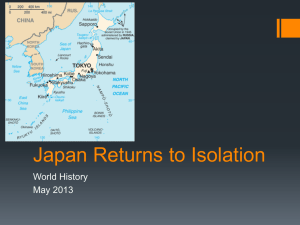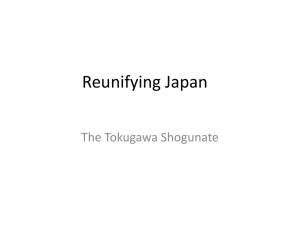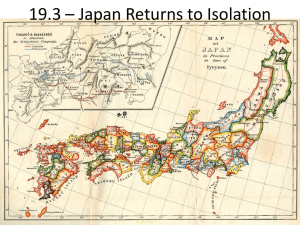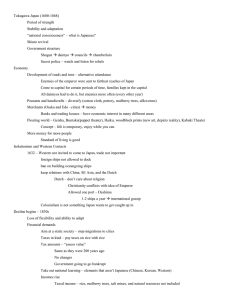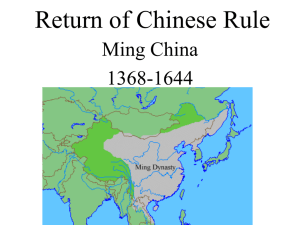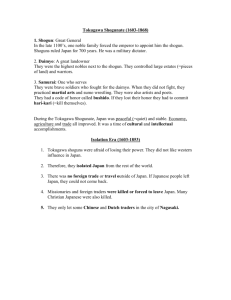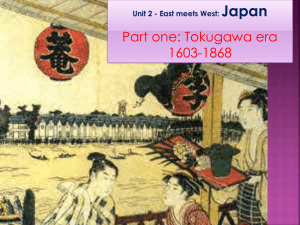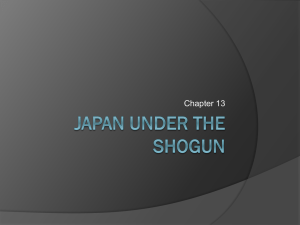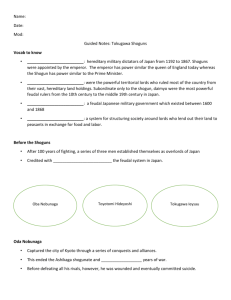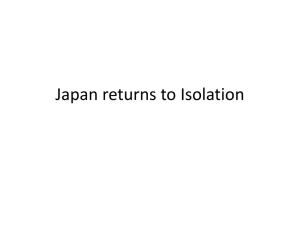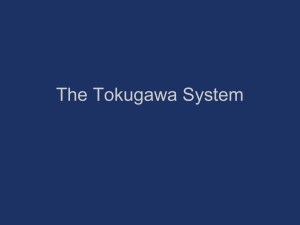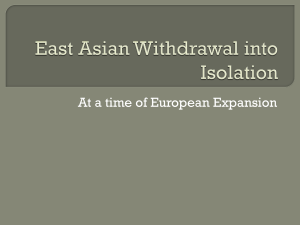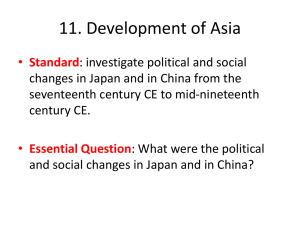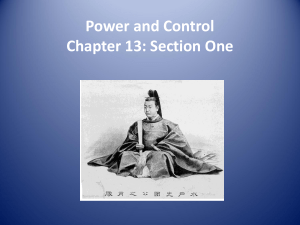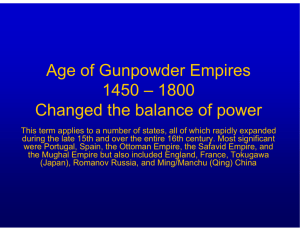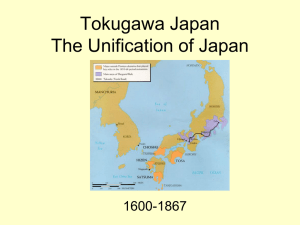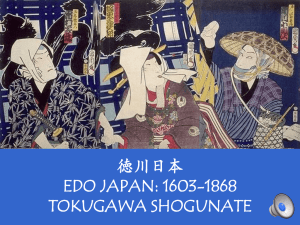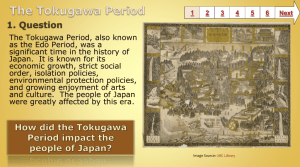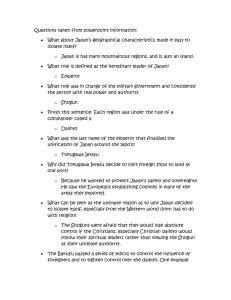“Like Western Europe during the Middle Ages, Japan had a feudal
advertisement
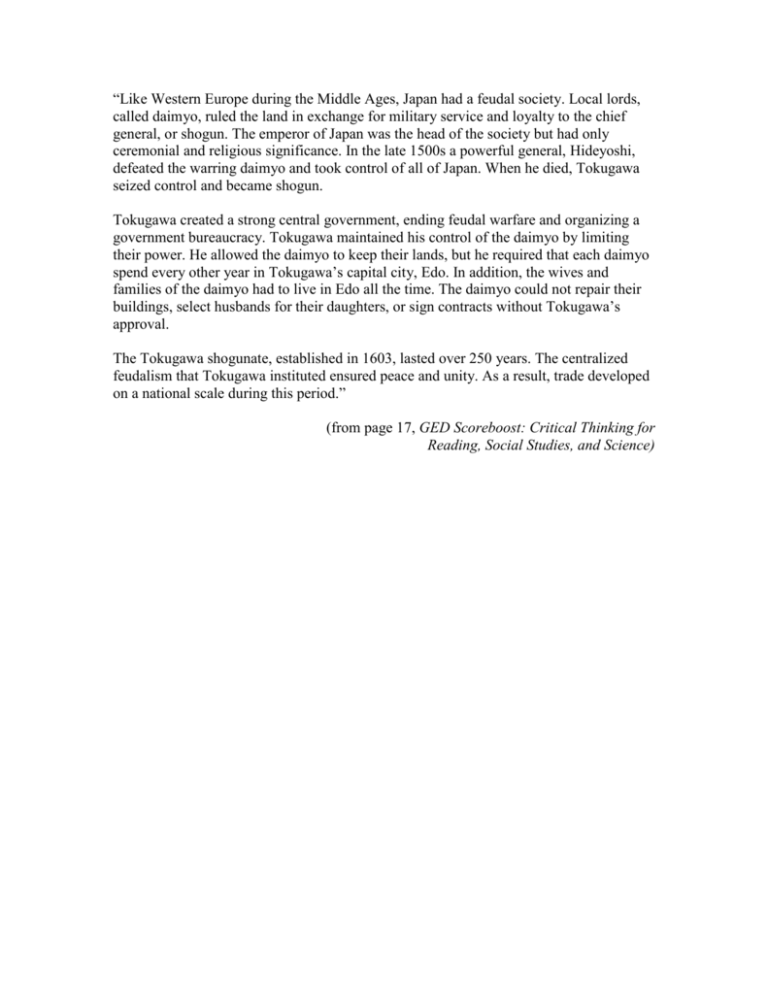
“Like Western Europe during the Middle Ages, Japan had a feudal society. Local lords, called daimyo, ruled the land in exchange for military service and loyalty to the chief general, or shogun. The emperor of Japan was the head of the society but had only ceremonial and religious significance. In the late 1500s a powerful general, Hideyoshi, defeated the warring daimyo and took control of all of Japan. When he died, Tokugawa seized control and became shogun. Tokugawa created a strong central government, ending feudal warfare and organizing a government bureaucracy. Tokugawa maintained his control of the daimyo by limiting their power. He allowed the daimyo to keep their lands, but he required that each daimyo spend every other year in Tokugawa’s capital city, Edo. In addition, the wives and families of the daimyo had to live in Edo all the time. The daimyo could not repair their buildings, select husbands for their daughters, or sign contracts without Tokugawa’s approval. The Tokugawa shogunate, established in 1603, lasted over 250 years. The centralized feudalism that Tokugawa instituted ensured peace and unity. As a result, trade developed on a national scale during this period.” (from page 17, GED Scoreboost: Critical Thinking for Reading, Social Studies, and Science)
